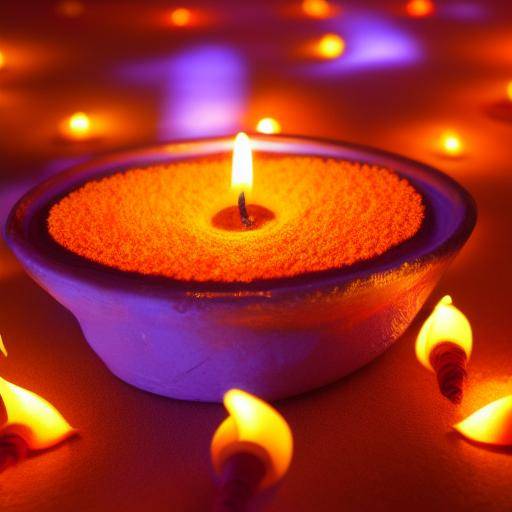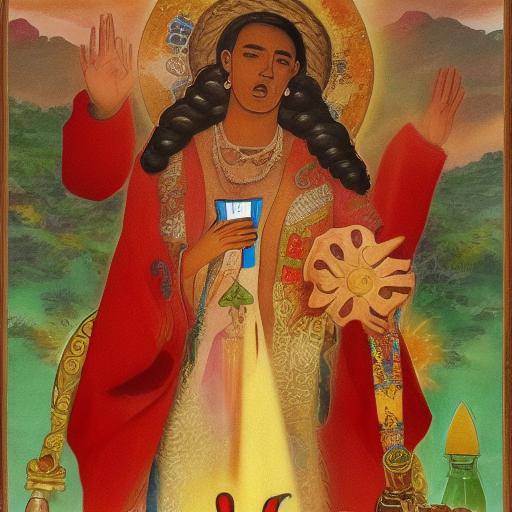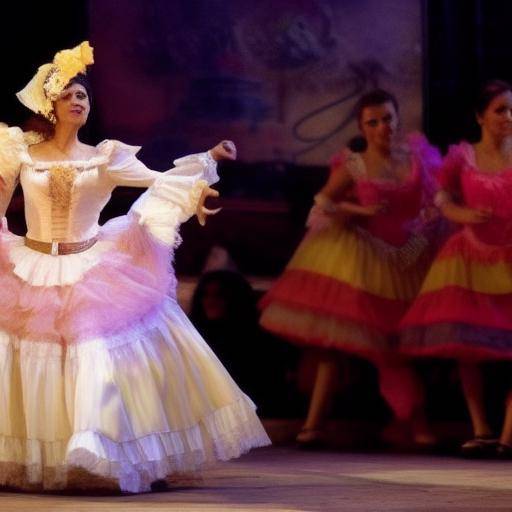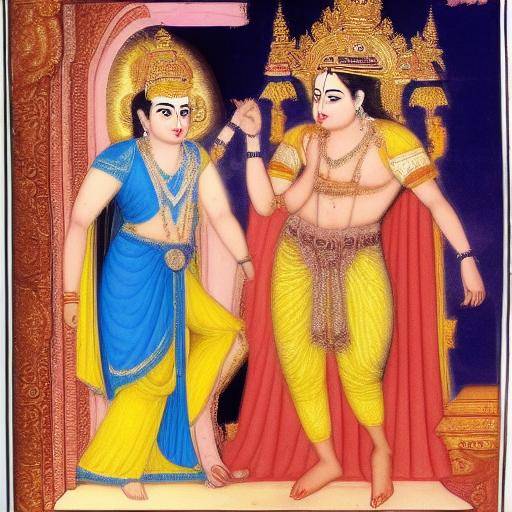
Welcome to the colorful and dazzling Diwali festival in India! This article will explore in detail the rich history, traditions and meaning behind this annual festival. You will learn about Rama, Sita and the beautiful oil lamps that illuminate this culturally significant event. In addition, you will discover how the different aspects of Diwali are intertwined and why this festival is so important for millions of people around the world.
Introduction
The Light that Lights Heaven and Hearts
Diwali, also known as Deepavali, is one of the most important festivals in India. This festival is a five-day festival that celebrates the victory of good over evil, light over darkness and knowledge about ignorance. During Diwali, houses and streets are decorated with pyrotechnic games and oil lamps, projecting a vibrant festive atmosphere. Get ready to get into Diwali's magic and spirituality!
History and Background
Talking about Diwali is going back to centuries of history and tradition. Its roots are found in the ancient account of Ramayana, where Rama, the prince of Ayodhya, returned to his kingdom with his wife Sita and her brother Laxman after 14 years of exile. The history of Rama is a tale of courage, devotion and justice that has transcended generations, becoming a central symbol of Diwali.
The return of Rama to Ayodhya is commemorated by lighting oil lamps and lamps that illuminate the way, symbolizing the victory of good over evil and dispelling the darkness. This deeply rooted symbolism shapes the very essence of Diwali and its connection with Rama, Sita and the oil lamps.
Evolution of the Diwali Celebrations
Over time, Diwali celebrations have evolved, incorporating regional traditions, family rituals and modern adaptations. The holidays include home cleaning and decoration, gift exchange, preparation and enjoyment of delicious meals, as well as participation in prayers and religious ceremonies.
The extension of Diwali beyond India has led to the global adoption of the celebrations, with Hindu, Sikh and Jainist communities, as well as people from various cultures, joining to celebrate light and victory over adversity.
Deep analysis
Spiritual and Cultural Significance
Diwali's significance goes beyond its historical and mythological origins. For many, this festival represents a new beginning, the renewal of commitment to excellence and the search for truth. Diwali's spirit highlights the importance of personal overcoming, family unity and community service.
Current Challenges and Opportunities
As society evolves, Diwali faces challenges such as excessive marketing, contamination due to fireworks and the loss of their spiritual roots. However, it has also become an opportunity to promote sustainability, inclusion and respect for different traditions.
Diverse Perspectives
Diwali celebrations vary according to region, community and individual beliefs. From the spectacular display of lights in Mumbai to the serenity of prayers in Varanasi, the various perspectives make Diwali a rich and diverse festival in experiences.
Comprehensive review
Applications in Modern Life
The essence of Diwali, the light upon darkness, has applications in modern life. In facing personal, professional and social challenges, the festival reminds us of the importance of hope and resilience. The illumination of oil lamps during Diwali represents the elimination of ignorance and the search for knowledge, values that are fundamental in a world that seeks progress and integral development.
Best Practices and Lessons Learned
Several communities and organizations have adopted sustainable practices during Diwali, promoting the development of ecological oil lamps, promoting the exchange of eco-friendly gifts and organizing events that preserve the authenticity and original purpose of Diwali.
Detailed Analysis of Pros and Contras
The beauty and grandeur of Diwali celebrations must be balanced with social and environmental responsibility. Excessive generation of waste and air pollution pose important challenges that require a careful approach to preserving traditions while protecting the environment.
Comparative analysis
Rama and Sita: Devotion and Sacrifice symbols
The history of Rama and Sita is a timeless lesson of love, courage and loyalty. Despite facing trials and tribulations, their relationship has become a symbol of devotion and union that resonates over time. Diwali celebrates its history and the central role they played in restoring dharma.
Oil Lamps: Light and Hope
Oil lamps play a dual role in Diwali. They symbolize the guiding and protecting light, as well as a sense of community and unity. The tradition of lighting oil lamps during Diwali reminds us that hope and faith in dark times can unite people and lead to spiritual rebirth.
Practical Tips and Accessible Recommendations
Preserving the Authenticity of Diwali
In observing Diwali, it is essential to preserve its authenticity and original meaning. Opting for oil lamps made of sustainable materials, participating in activities that promote unity and love, and contributing to the community through charities and acts of kindness are ways to keep the spiritual roots of Diwali alive.
Environmental Care and Sustainability
To enjoy Diwali in a sustainable manner, practices such as limiting the use of fireworks, opting for ecological alternatives for lighting, and raising awareness of the importance of a clean and healthy environment during the holidays can be adopted.
Industry Perspectives and Expert Reviews
Visions About the Future of Diwali
Experts on culture, sustainability and community development have expressed their visions about the future of Diwali. Many argue that the festival must evolve consciously, adapting to contemporary challenges while preserving their spiritual and cultural roots. Diwali's role in promoting compassion, tolerance and resilience in a global community has also been discussed.
Case Studies and Real Life Applications
Innovation and Tradition in Diwali
The combination of innovation and tradition during Diwali has been reflected in various initiatives, such as the adoption of energy-saving LED lamps, educational events on the history and beliefs behind Diwali, as well as efforts to preserve traditional crafts used in the manufacture of oil lamps.
Positive Impact on Communities
Diwali celebrations have been the catalyst for the creation of programs that provide economic opportunities to local communities, the preservation of artisanal skills and the promotion of female empowerment through the manufacture and sale of handmade oil lamps.
Future Trends and Predictions
Evolution and Continuous Adaptation
Diwali festivals are experiencing a gradual shift towards sustainability, inclusion and conscious celebration. The future celebrations of Diwali are expected to increasingly integrate sustainable practices and technologies while maintaining the spiritual and cultural spirit of the festival.
Emerging Challenges and Opportunities
The balance between preservation of centuries-old traditions and adaptation to a modern world presents challenges and opportunities for the future of Diwali. The continued momentum towards sustainability, innovation in the festivities and the promotion of Diwali as a platform for intercultural dialogue are aspects that are important for the upcoming celebrations.
Conclusions
In short, Diwali is much more than a festival of lights and celebrations. His story, central characters such as Rama and Sita, and the symbolic illumination of oil lamps weave a plot rich in spirituality, values and tradition. This festival has evolved over the centuries and remains relevant in the lives of millions of people in India and beyond.
Lifting the Light and Hope
Diwali reminds us that light can dispel darkness, that love overcomes adversity and that unity transcends differences. As we immerse ourselves in the joy and depth of this festival, let us remember that its essence lies in the ability to illuminate not only the sky, but also our hearts.
FAQs
Who are Rama and Sita in the history of Diwali?
Rama is the prince of Ayodhya and the central protagonist of the Ramayana epic, while Sita is his brave and devout wife. His story of love, sacrifice and resilience is one of the fundamental pillars of Diwali.
What is the meaning of oil lamps in Diwali?
Oil lamps symbolize the light that dissipates darkness, protection and community union. Understanding these lamps during Diwali represents the victory of good over evil and the search for knowledge.
How is Diwali celebrated in India?
Diwali is celebrated with colorful decorations, oil lamp lighting and fireworks. Families gather, exchange gifts and participate in various religious and cultural activities.
What is the spiritual importance of Diwali?
Diwali is a time for spiritual renewal, reflection and rebirth. It represents the victory of good over evil, the elimination of ignorance and the search for truth and wisdom.
How can Diwali be held in a sustainable way?
Diwali can be held in a sustainable manner by opting for ecological oil lamps, limiting the use of fireworks, promoting responsible gift exchanges and participating in activities that preserve traditions in a conscious manner.
What is Diwali's central message for the contemporary world?
Diwali's central message is hope, unity and overcoming adversity. It also promotes compassion, mutual respect and the search for knowledge and truth.
Now that you have explored the magic and depth of Diwali, we invite you to celebrate this festival with a renewed understanding of its roots, meanings and values. May the light of Diwali illuminate your life with joy, hope and unconditional love. Happy Diwali!



